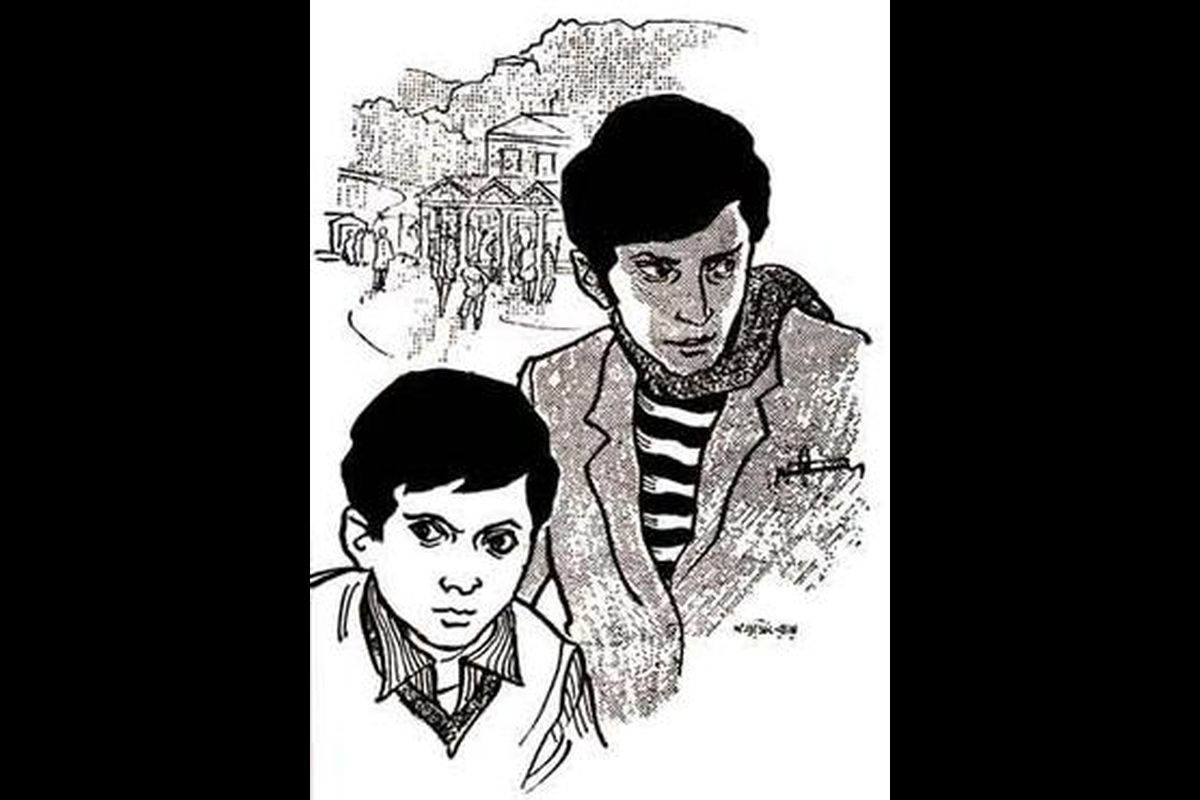Emotions in Ray’s films were so universal: Oz director Beresford
Satyajit Ray is probably one of the greatest directors ever and his films were powerful, said eminent Australian filmmaker Bruce Beresford today.
Director Sagnik Chatterjee speaks on his first documentary about Satyajit Rays iconic sleuth Feluda stories.

(Photo: Wikimediacommons)
Meet Sagnik Chatterjee. He is thrilled about the theatrical release of his debut film, Feluda, which has been getting positive reviews across the media. Feluda is the private detective created by the powerful pen of Satyajit Ray and though a fictional character, he is as, or perhaps more, famous than his creator. So, it is no surprise that it has attracted the attention of Chatterjee. His film is a documentary to record the “birth”, “evolution” and celluloid representation of the best literary detective after Saradindu Bandopadhyay’s Byomkesh Bakshi. Excerpts from an interview:
What motivated you to make a full-fledged documentary on Feluda?
I was assisting Sandip Ray when he was making Tintorettor Jishu in 2006- 2007. I came across books on Feluda’s adventures in different languages such as Oriya, Marathi, French, Italian and even Japanese! I was surprised because I had no knowledge of that though I was addicted to Feluda adventures myself. I also discovered Feluda on audio and digital platforms. I began to wonder about how an imaginary character can have such a global acceptance across generations, cultures, languages and time and I decided to make this documentary.
Advertisement
How did/do you relate to Feluda as a boy growing up and then as a man?
As a boy, I was addicted to Feluda because I was an only child. Secondly, my parents, cousins and other elders were addicted to Feluda stories and they would go on discussing the latest novel in the Pooja Annual that year. I wanted to participate in those discussions and so, I began reading all of them as they were published. Feluda stories introduced me to adventurers; I discovered a new place through a detailed description of it in the books and they were a trusted window of knowledge. I also loved the characters apart from Feluda and the mind-blowing sketches.
How did the stories influence you as a filmmaker?
I personally feel that the structure of the stories and the characters that inhabit them are a sheer delight to read. Ray created a common man and placed him in tough situations for him to triumph over. In sum, it is the triumph of a normal, regular citizen who is grounded and rooted. I also love the relationship between and among Feluda, Topshe, Jatayu and Sidhu Jyatha. The chemistry among them is thicker than any ties through the blood. In my opinion, Feluda is a global citizen in the true sense of the term though it was not commonly used when Ray gave “birth” to Feluda.
To what do you ascribe Feluda’s tremendous popularity across generations?
The written language, nature of the crime that happens in each novel, humour and characterizations are all very modern. A young adult today can easily relate to these traits. Ray’s greatest contribution is the childlike simplicity with which he has enriched his stories. Adult readers rediscover their childhood and their adolescence in those adventures. The youngsters use it as an agency of communicating with elders with equal authority and command as all of them have read Feluda, some time or another.
When did you decide to make a documentary and not a feature film?
I felt the content of my script would lend itself ideally to the documentary format because I wished to design it as a journey film. The content was elaborately detailed. I am not trained in making documentaries but I have watched different genres. I felt that only a documentary mapping the 50-year journey of Feluda would be able to do justice to my subject. I feel truly happy to I find that all my technicians from Sujay Dutta Ray who edited the film, Nihar Samal, who worked on the sound design, and Mir who functioned as the voice-over artist, have made their debut in those roles along with me in this film.
Where did you arrange the funding from?
Initially, a friend of mine was interested and put in the finance but he could not continue when the film was 50 per cent shot. I approached some people but no one came forward because it is a documentary. Then I deposited all my savings; took gold loans and resorted to crowdfunding and that helped to complete the film. This is the first film in the Eastern zone to have met a budget of Rs 15 lakh through the Wishberry Crowd Funding Platform.
How long did the research take and what did it comprise of?
My own research took one full year. Sunil Sengupta, a noted Feluda scholar, helped me with that. Riddhi Goswami and Sreeparna Mitra helped in acquiring important material. The Ray Society and Sandip Ray extended help as and when I required it. The structure got built during the research and while the shooting was on. Post-production took another year.
Why did you shoot in London?
My desire was to establish the relationship between Sherlock Holmes and Feluda visually because Feluda considers Holmes his guru. I needed to showcase that respect. London is also the place where James Bond was created and he has been highlighted in many Feluda stories, so London was very important for my film.
How did you decide on the music?
Apart from choosing the Feluda theme composed by Ray himself, I took three classical musicians on board —Somnath, Soumalya and Soodipto who had not scored exclusively for this kind of film before. I guided them all the time by saying, “This is my Feluda, so the sound must be different and yet it must have the feel of that ‘gharana’ of music” and they did the rest. I am very happy with their work.
Advertisement